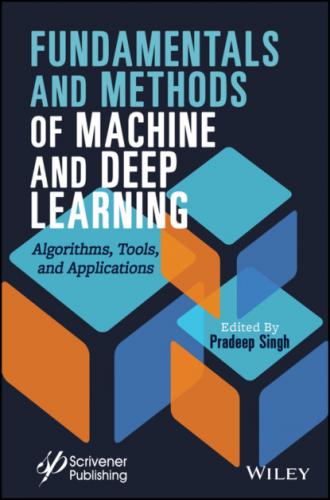1.8.6 Self-Driving Cars
This may be one of the most breath taking the implementation of ML in the modern world. Tesla uses deep learning and other algorithms to build a self-driving car. As the computation required for this is very high, we need matching hardware to run these algorithms, NVIDIA provides the necessary hardware to run these computationally expensive models.
1.8.7 Google Translate
Before when you remember the times when you go to a new place where the language used there is completely new to you and you find it difficult to communicate with the locals or find places you wanted to go, this was mainly because you could not understand what is written on the local spots. But nowadays, Google’s GNMT is a neural machine algorithm that has a dictionary of thousands of millions of words of many different languages, uses natural language processing to very efficiently and accurately translate any sentences or words. Even the tone of every sentence matters, it uses techniques like NER.
1.8.8 Online Video Streaming (Netflix)
More than a 100 million users use Netflix, and there is no doubt that it is the most-streamed web service in the whole world. Netflix application use ML algorithms which collect a massive amount of data about the users, when the user pauses, rewinds, or fast forwards. It also takes data depending on the day you watch the content, the date and time, and mainly the rating pattern and search pattern. The application collects these data from each of their users they have and use their recommendation systems and a lot of algorithms related to ML approaches.
1.8.9 Fraud Detection
Currently, online credit card fraud detection is 32 billion dollars market in 2020. That is approximately higher than the profit made by many MNC companies combined. Nowadays, the number of payment channels like a credit card, debit card, numerous wallets, UPI, and much more has increased the number of criminals. ML approaches fraud detection as a classification problem.
1.9 Conclusion
In the anticipating years, ML will embrace a significant reason in the divulgence of data from the abundance of information that is at present open in a different zone of utilization. The supervised learning strategies are developing constantly by the information researchers, which contain an enormous arrangement of algorithms. This zone has the consideration of numerous engineers and has picked up generous advancement in the most recent decade. The learning strategies accomplish magnificent execution that would have been hard to get in the earlier many years. Given the reckless development, there is a lot of room for the engineers to work effectively and to develop the SML strategies.
References
1. Iqbal, M. and Yan, Z., Supervised Machine Learning Approaches: A Survey. Int. J. Soft Comput., 5, 946–952, 2015, 10.21917/ijsc.2015.0133.
2. Nasteski, V., An overview of the supervised machine learning methods. Horizons. B., 4, 51–62, 2017, 10.20544/HORIZONS.B.04.1.17.P05.
3. Sharma, R., Sharma, K., Khanna, A., Study of Supervised Learning and Unsupervised Learning. Int. J. Res. Appl. Sci. Eng. Technol. (IJRASET), 8, VI, June 2020.
4. Kotsiantis, S.B., Supervised Machine Learning: A Review of Classification Techniques, in: Proceedings of the 2007 conference on Emerging Artificial Intelligence Applications in Computer Engineering: Real Word AI Systems with Applications in eHealth, HCI, Information Retrieval and Pervasive Technologies, The Netherlands, 2007.
5. Osisanwo, F.Y., Akinsola, J.E.T., Awodele, O., Hinmikaiye, J.O., Olakanmi, O., Akinjobi, J., Supervised Machine Learning Algorithms: Classification and Comparison. Int. J. Comput. Trends Technol. (IJCTT), 48, 3, 128–138, June 2017.
6. Brownlee, J., Linear Regression for Machine Learning – Machine Learning Mastery, [online] Machine Learning Mastery https://machinelearningmastery.com/linear-regression-for-machine-learning/.
7. Brownlee, J., Logistic Regression for Machine Learning – Machine Learning Mastery, [online] Machine Learning Mastery Available at: https://machine-learningmastery.com/logistic-regression-for-machine-learning/.
8. Mitchell, T., Machine Learning, 432pp., McGraw Hill, Carnegie Mellon University, 2015.
9. https://www.javatpoint.com/machine-learning
11. https://www.edureka.co/blog/supervised-learning/
12. https://machinelearningmastery.com/supervised-and-unsupervised-machine-learning-algorithms/
13. Fabris, F., Magalhães, J.P., Freitas, A.A., A review of supervised machine learning applied to ageing research. Biogerontology, 18, 2, 171–188, 2017.
14. Ayodele, T., Types of Machine Learning Algorithms, InTech Open, 2010, https://www.intechopen.com/chapters/10694
15. Musumeci, F. et al., An Overview on Application of Machine Learning Techniques in Optical Networks. IEEE Commun. Surv. Tutorials, 21, 2, 1383– 1408, Secondquarter 2019.
16. https://en.wikipedia.org/wiki/Logistic_regression
17. https://www.edureka.co/blog/decision-trees/
18. Mohri, M., Rostamizadeh, A., Talwalker, A., Foundations of machine learning, MIT Press, Cambridge, MA, 2012.
19. Cioffi, R., Travaglioni, M., Piscitelli, G., Petrillo, A., De Felice, F., Artificial Intelligence and Machine Learning Applications in Smart Production: Progress, Trends, and Directions. Sustainability, 12, 492, 2020.
20. Behera, R. and Das, K., A Survey on Machine Learning: Concept, Algorithms and Applications. Int. J. Innov. Res. Comput. Commun. Eng., 5, 2, 1301–1309, 2017.
21. Domingos, P., A few useful things to know about machine learning. Commun. ACM, 55, 10, 14–20, 2012.
1 * Corresponding author: [email protected]
2 † Corresponding author: [email protected]
3 ‡ Corresponding author: [email protected]
4 § Corresponding author: [email protected]
